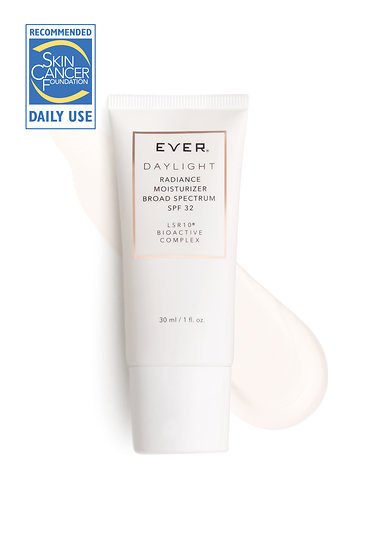
Every time I say the words “wear sunscreen” I am reminded of a song from my high school graduation “Everybody’s Free to Wear Sunscreen” by Baz Luhrmann! Listen to it if you haven’t heard it before and even if you have!
Many people have questions about sun protection. UVA? UVB? Broad Spectrum? Chemical vs Physical? Sun protective clothing? UV index? Can I get sunburned even in the winter?
Let’s dig deeper and try to find some answers.
Types of UV exposure:
UVA (UVA1 and UVA2) (95% of UV radiation)
Negative effects of UVA:
- Aging
- Sunburn
- Skin cancer
UVB (makes up 5% of UV radiation)
Negative effects of UVB:
- Sunburn
- Hyperpigmentation
- Skin inflammation
- Skin cancer
Who’s at risk?
Everyone!
No matter your skin tone, UV rays are damaging to all skin tones and it is recommended that everyone practice measures to protect themselves from damage.
How to protect yourself from UV damage:
- Avoid going in the sun during peak hours
- Peak sun hours are between the hours of 10 am and 4pm. This is the time of day where the UV rays are thought to be the strongest
- Cloudy days, snow days count too!
- Wear sun screen
- Sun protective clothing- UPF rated clothing and a wide brimmed hat
- Monitor the UV index at https://www.epa.gov/sunsafety/uv-index-1
- Review medication side effects with your doctor
Below I dig a little deeper to help clarify some definitions and tips to protect yourself from sun damage.
Types of sunscreen and their safety:
Organic (chemical sunscreens)
- Common examples of chemical names in OTC sunscreens:
- Oxybenzone
- Avobenzone
- Octisalate
- Octocrylene
- Homosalate
- Octinoxate
Safety of Organic Sunscreens:
- Limited studies have been done. Those that have been done, suggest systemic absorption of the chemicals.
- Current guidelines continue to recommend use of sunscreen but note those concerned about the possibility of systemic absorption should use an inorganic sunscreen.
Inorganic (physical sunscreens)
- Common in OTC sunscreens- titanium and zinc oxide
Safety of Inorganic
- Available evidence suggests excellent safety profile
Sunscreen Labeling Explained:
- SPF is the ratio of minimal dose of radiation that produces visible redness on skin that is protected with sunscreen compared to unprotected skin.
- SPF is mainly a reflection of UVB protection which is only 5% of the total UV exposure.
- Since 2012 FDA has regulated the labeling of sunscreen. Now all sunscreens must past an FDA test to be able to label the product as Broad Spectrum. Broad Spectrum indicates protection from both UVA and UVB rays. Only Zinc Oxide and Titanium will protect from UVA1, UVA2, and UVB.
- Water Resistant- maintains SPF after 40 minutes
- Very Water Resistant- maintains SPF after 80 minutes
What level of SPF do I really need?
Daily use:
- For daily use, use a broad spectrum sunscreen with SPF > 15
Outdoor work, sports, or recreational activities:
- Use broad spectrum sunscreen product with SPF >30 and water resistance.
It has been found that SPF > 50 provides only negligible increase in UV protection.
How much sunscreen to apply:
- Check out the “teaspoon rule”
- 1 teaspoon (you can approximate here) of sunscreen to the face and neck area, 2 teaspoons to the front and back torso, 1 teaspoon to each upper extremity, and 2 teaspoons to each lower extremity
When to apply sunscreen:
- 15-30 minutes prior to sun exposure
- Wait a few minutes after applying sunscreen to get dressed
- Always reapply after swimming, sweating or wiping off with a towel
- Remember, water resistant lasts only 40 minutes and very water resistant lasts only 80 minutes
- Apply every 2 hours if prolonged sun exposure
What good is sunscreen anyways?
- Protects from skin cancer
- Protects from skin damage such as wrinkles and pigment changes
- Protects from skin disorders that are related to sun exposure
UPF and Sun Protective Clothing:
You may see swimsuits, swim shirts etc with a UPF rating listed. What is UPF?
UPF stands for ultraviolet protection factor. This factor represents how effective a fabric is at blocking out UV radiation from the sun.
UPF 15-24 = good protection
UPF 25-39 = very good protection
UPF 40-50 = excellent protection
Know your medications:
Always talk with your doctor about medication side effects. Some medications such as certain antibiotics and antidepressants as well as topical medications such as retinoic acid can cause you to be at a higher risk for sunburn.
My Daily Sunscreen:

EVER DAYLIGHT Radiance Tinted Moisturizer Broad Spectrum Sunscreen SPF 32 with LSR10®
- Titanium Dioxide and Zinc Oxide are physical shields against UVA/UVB rays and provide SPF 32 sun protection.
- LSR10® patented, bioactive complex of three molecules scientifically formulated to reduce visible signs of aging.
- Hyaluronic filling spheres plump skin with moisture and visibly smooth wrinkles
- Vitamin C visibly clarifies and brightens skin tone providing you a radiant glow
- Optical diffusers bounce light off to visibly smooth the skin
- Available with and without tint
Now you will always remember to “Wear Sunscreen”!
